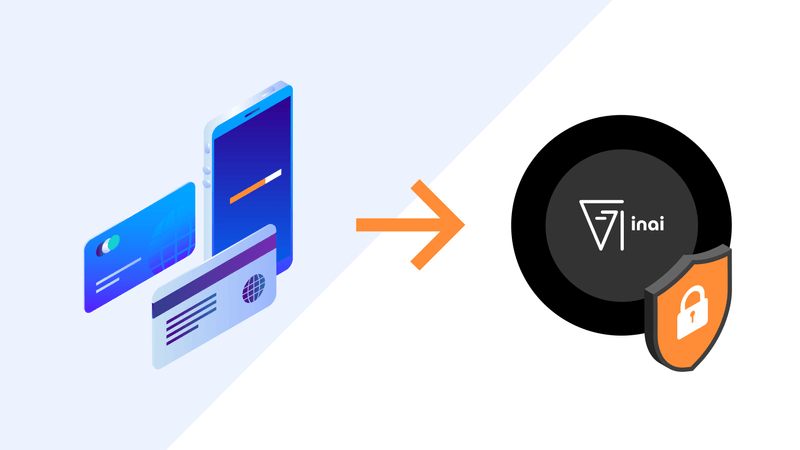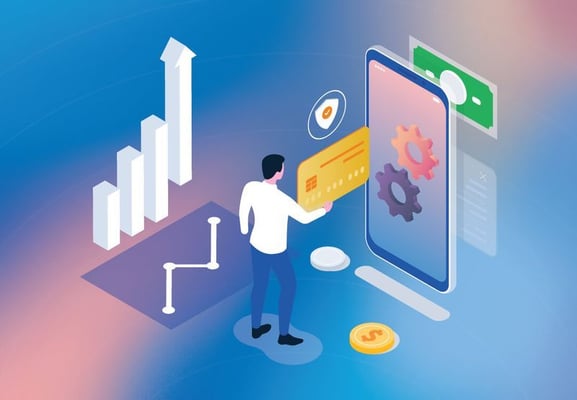'Tokenization' is currently the payments buzzword due to increased attention on digital wallets like Apple Pay, PayPal, and Gpay. This article will discuss how to implement payment tokenization, how it works, and the pros and cons of adopting it in your payment infrastructure. Let's dive in.
What is Payment Tokenization?
Tokens are encrypted, unique, and secure pieces of data that hold the payment data associated with them instead of being stored directly with the merchant, payment gateway, or processor. Payment tokenization offers many benefits to both the merchant and customers, such as increased security and reduced PCI compliance costs. But more on that later. Payment tokenization technology is used by leading card scheme networks and digital wallets.
How does Tokenization work?
Tokenization works like a placeholder for sensitive payment information. When you make a purchase, your card information is swapped out for a token. That token is what enables secure transactions. The PAN is not transmitted during the transaction, making the payment process secure. If a hacker breaks into one merchant's system, that data isn't linked to your other credit cards, making it harder for criminals to commit fraud.
Tokenized payments can happen both on and offline. To visualize how the tokenization process goes, here's how it looks step by step:
- A credit card is used at a POS machine or an online transaction.
- The credit card number is passed to the tokenization vault.
- The tokenization vault generates a 16 random character string to replace the original credit card number.
- The tokenization vault returns the new random string to the POS or eCommerce site and replaces the customer's payment information in their system. The string will be different for every merchant the customer uses their card.
What Do Tokens Look Like?
In a tokenized world, tokens – digital representations of value – travel from one party to another. To avoid confusion, these tokens look nothing like the real currency. Instead, they're entirely abstract representations of money that operate on a variety of unique blockchain platforms and networks.
There are two types of tokens:
Format preserving tokens: have the appearance and length of a 16-digit credit card number.
Non-format preserving tokens: do not look like a credit card number and can vary in length and include alpha and numeric characters.
What are the Pros and Cons of Payment Tokenization?
Payment tokenization pros:
1.Reduced data breaches
With data breaches and cyber-attacks becoming more common, every financial institution is scrambling to find a better solution for storing and transmitting sensitive customer data. Payment tokenization has emerged as a secure alternative to traditional payment cards that protect customer data from criminals who might intercept it in transit.
2.Simplifies compliance
Tokenization simplifies PCI-DSS compliance by removing credit card information from your environment. This data storage and transfer method eliminates any possibility of a third-party cyber-attack.
3.Facilitates trust with customers
Payment tokenization establishes an extra layer of trust between merchants and customers. Merchants know that sensitive data remains safe with them at all times, while customers can trust that their payment data cannot be compromised in case of an attack. However, merchants may need to educate customers on the advantages of payment tokenization and how it works.
4.Tokenization can be used for any type of sensitive information
Tokenization is an effective security measure against releasing sensitive personal data and can be used for protecting mediums such as financial statements, medical records, criminal records, driver's licenses, loan applications, stock trades, voter registrations, and more.
5.Reduces the responsibility and costs of handling customer data
Tokenization relieves the load of storing and encrypting cardholder data from your shoulders. As a result, PCI-DSS compliance becomes easier and cheaper as tokenization shifts most PCI compliance requirements from you to your token provider.
Payment tokenization cons:
1.Can complicate your payments infrastructure
As with any extra layer of security, if you employ your own tokenization vault, you can expect to see your payment infrastructure become more complex. For example, the customer's information must go through detokenization and retokenization systems to stay protected while authorized.
2.Not all payment processors offer Tokenization
Payment tokenization technology is relatively new. You will find a limited number of processors only support tokenization. You may have to integrate with a payment processing tool that may not be your first choice.
3.Tokenization doesn't eliminate all security risks
Tokenization eliminates many security risks, but not all, especially when working with third-party vaults. You will be reliant on the vendors you partner with to have appropriate systems in place to protect your customers' data.
How Can Merchants Take Advantage of Tokenized Payments?
1.Improves checkout conversions
Payment tokenization provides a seamless checkout experience for returning customers. As their payment data is already stored via a token, you can create a frictionless checkout, which reduces the number of steps the customer has to take to pay to just one click, which will only delight your customers and improve your conversion rates.
2.Facilitates an omnichannel strategy
A great omnichannel strategy gives customers everything they need to explore and transact on the channel of their choice. With omnichannel payment tokenization, customers can seamlessly buy goods and services on another channel after leaving the store. There's no need for customers to input their credit card data again into the merchant's website, as it was already captured at the retail store POS.
How inai Can Help You Easily Tokenize Payments
The inai payment platform provides a single source of integration and connects to multiple payment gateways and numerous local payment methods at once. Merchants have immediate access to more than 300+ international payment methods and can tokenize the payment data no matter which methods a customer uses.
Apart from top-notch security, our platform helps business owners to improve their conversion rates during the checkout process by offering a localized checkout experience (be it payment methods, language, or currency). The tokenization payment data also helps merchants to create a frictionless checkout experience by facilitating one-click payments.
.png?width=123&height=71&name=inai%20logo%20-%20dark%201(1).png)

%20(1).png?width=4068&name=62a98ecf3f26b60688911363_CTA%20(1)%20(1).png)
.png?width=150&name=karthik%20(1).png)
.png?height=400&name=Header%20-%20Tokenization%20(1).png)
.png?width=50&name=karthik%20(1).png)


